One of the primary ways that the tobacco and vape industries have attracted new youth users is by selling sweet, fruity and candy-flavored products. Flavors improve the taste and reduce the harshness of tobacco products, making them more appealing and easier for young people to use. Flavors also create the impression that these products are less harmful than they really are.
The rates of NYS high school student use of various tobacco products over time illustrates the power of flavors in attracting youth. Youth cigarette use decreased dramatically after 2009 when flavored cigarettes, excepting menthol, were no longer allowed for sale. During the same period and for the first time, youth use of cigars, cigarillos and chew in flavors like chocolate, wild berry, watermelon, lemonade and cherry dynamite, exceeded the rate of youth cigarette use and is currently nearly twice the rate. After thousands of differently flavored e-cigarettes entered the market in 2013, youth use of e-cigs increased by 160% in NYS between 2014-2018, skyrocketing to an alarming 30.6% of high school students using e-cigs in 2018. Although e-cigarette use among high school students has been decreasing since 2018, more than 1 in 5 high school students still use at least one tobacco product.
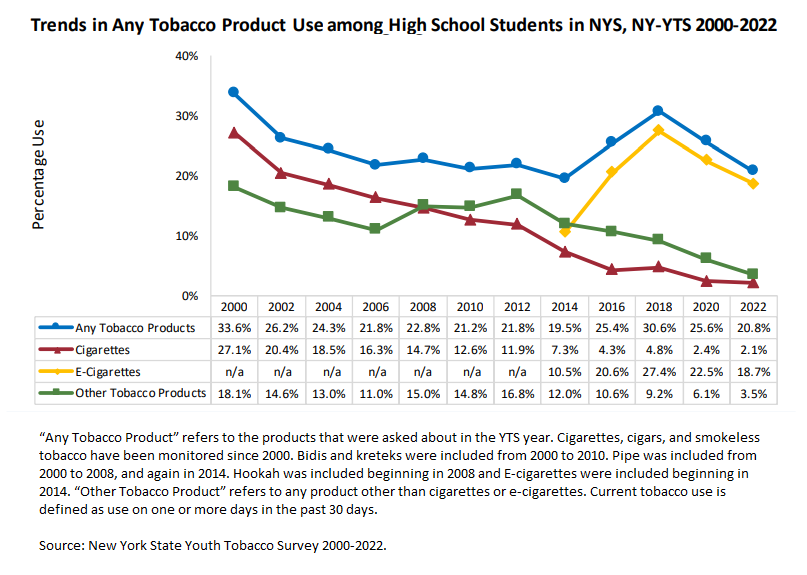
Steps New York State has taken:
- Prohibiting the sale of flavored e-cigs, including menthol, as of May 18, 2020
Problems that remain: Menthol Cigarettes and Other Flavored Tobacco Products
Menthol cigarettes, along with other sweet, fruity and candy flavors in tobacco products, are used by the tobacco industry as a starter kit for kids. Flavored cigars and little cigars are available in fruit and candy flavors, are widely available, and can be sold in small inexpensive packages. Learn more about the impact of flavored tobacco products on youth tobacco use here.
Menthol takes a particularly significant toll on the health of African Americans because of the tobacco industry’s long history of aggressively marketing menthol to the African American community. As a result, nearly 90% of African American adult smokers use menthol cigarettes as compared to 29% of white smokers. The increased risks associated with mentholated tobacco use led the NAACP to recently recommend that the FDA ban menthol in cigarettes. Learn more about the impact of menthol on the African American community here.
The LGBTQIA+ community has also been a target of tobacco marketing. For more than 30 years, major tobacco companies have tried to present themselves as allies to LGBTQIA+ communities through representation in tobacco ads, sponsorship of Pride events, and financial support to HIV/AIDS organizations. The goal was to make smoking, and menthol cigarettes in particular, an accepted part of queer culture. This aggressive strategy contributes significantly to LGBTQIA+ people using tobacco, including menthol cigarettes, at higher rates than people who are cisgender and straight. Learn more about the impact of tobacco use on the LGBTQIA+ community here.
Solutions
Restrict the sale of flavored tobacco products, including menthol.


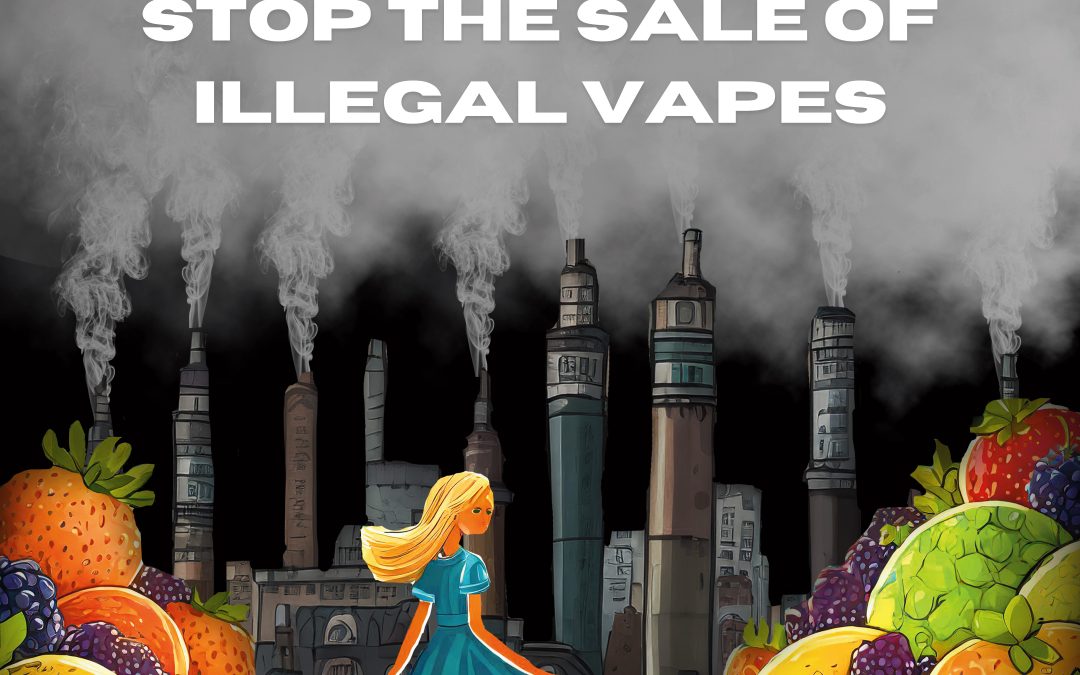
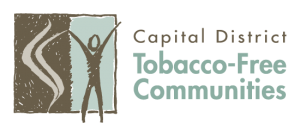

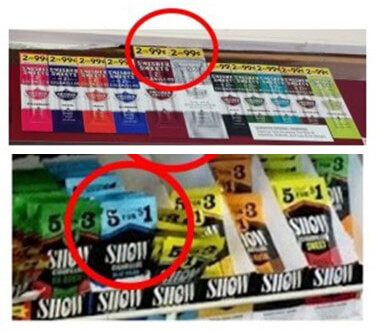
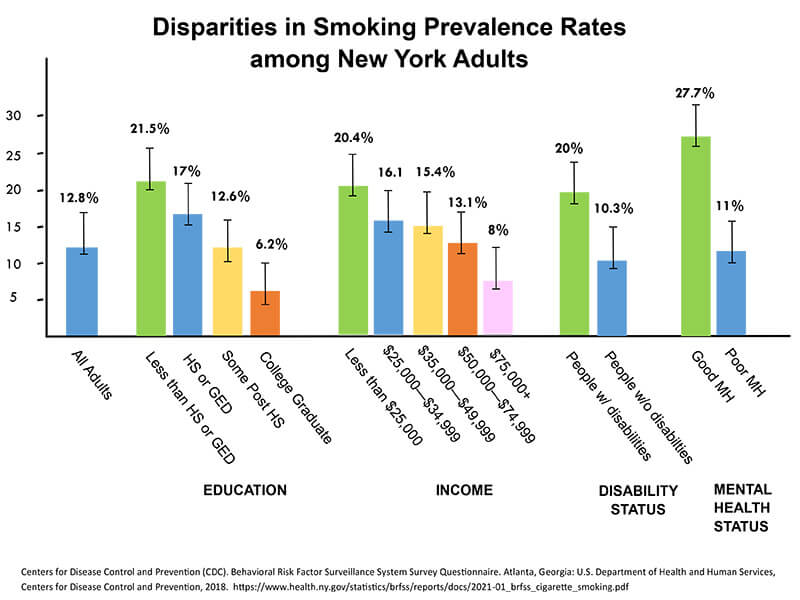
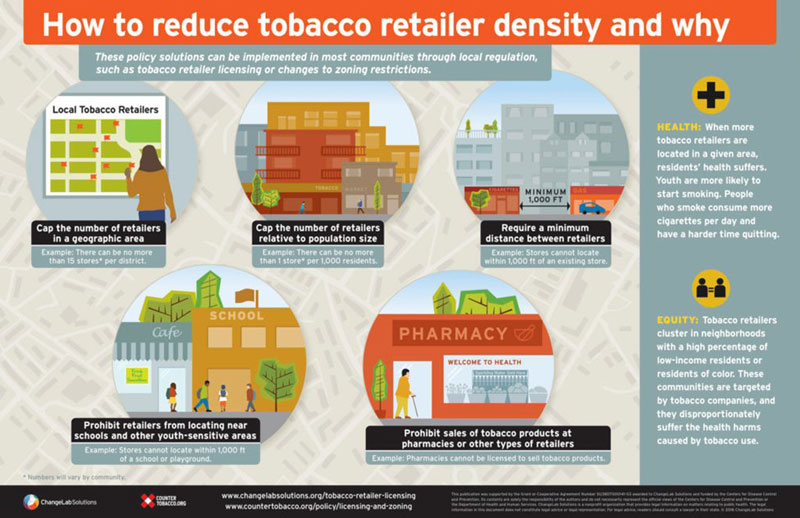



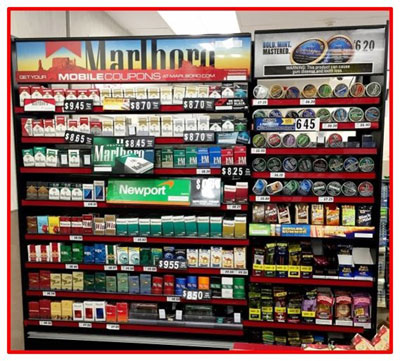 To the left is a typical tobacco product display. If you don’t use tobacco, you may not even notice, but kids do. Kids see. Kids notice. Kids remember. In fact, kids are more than twice as likely as adults to notice and remember retail tobacco marketing.
To the left is a typical tobacco product display. If you don’t use tobacco, you may not even notice, but kids do. Kids see. Kids notice. Kids remember. In fact, kids are more than twice as likely as adults to notice and remember retail tobacco marketing.